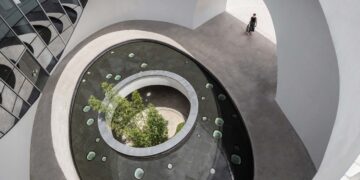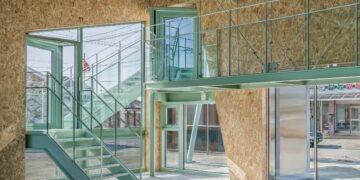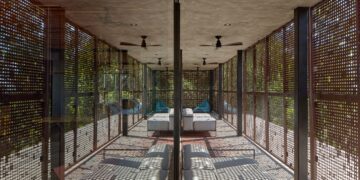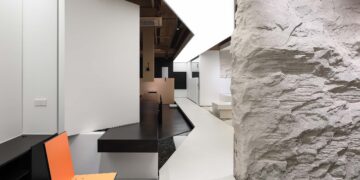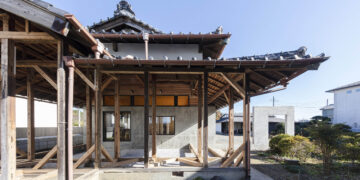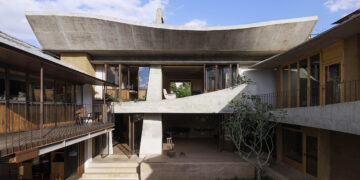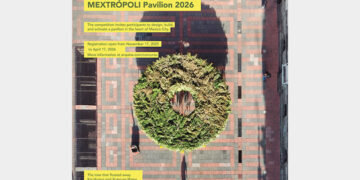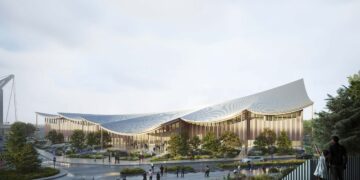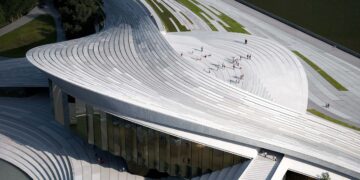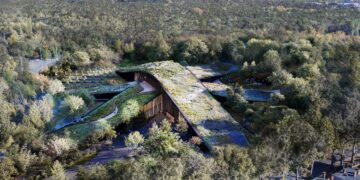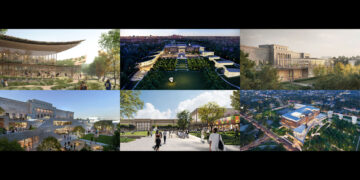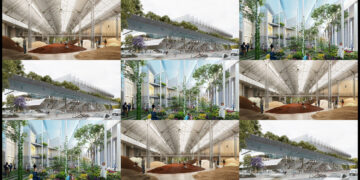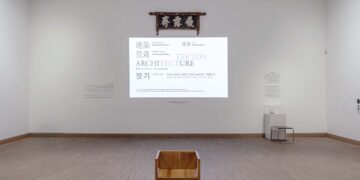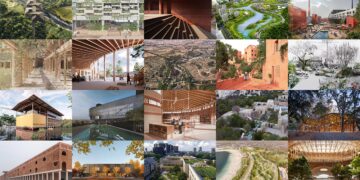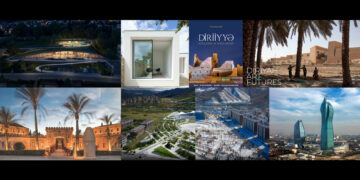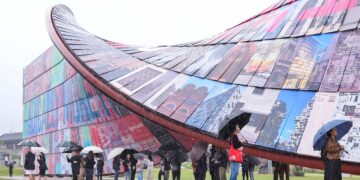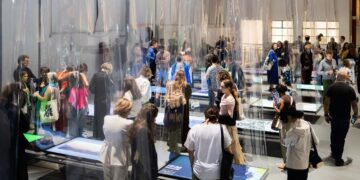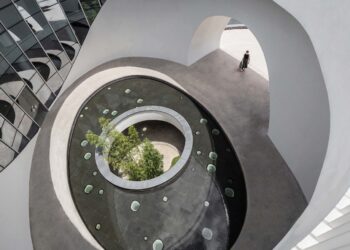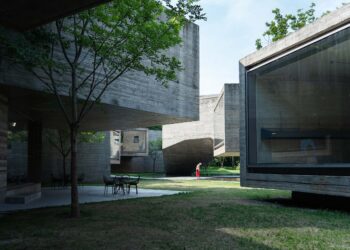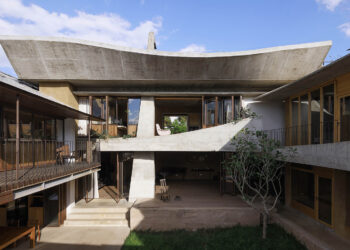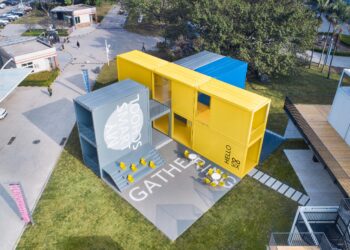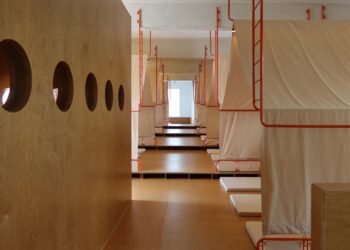An abstract version of a traditional Chinese landscape painting
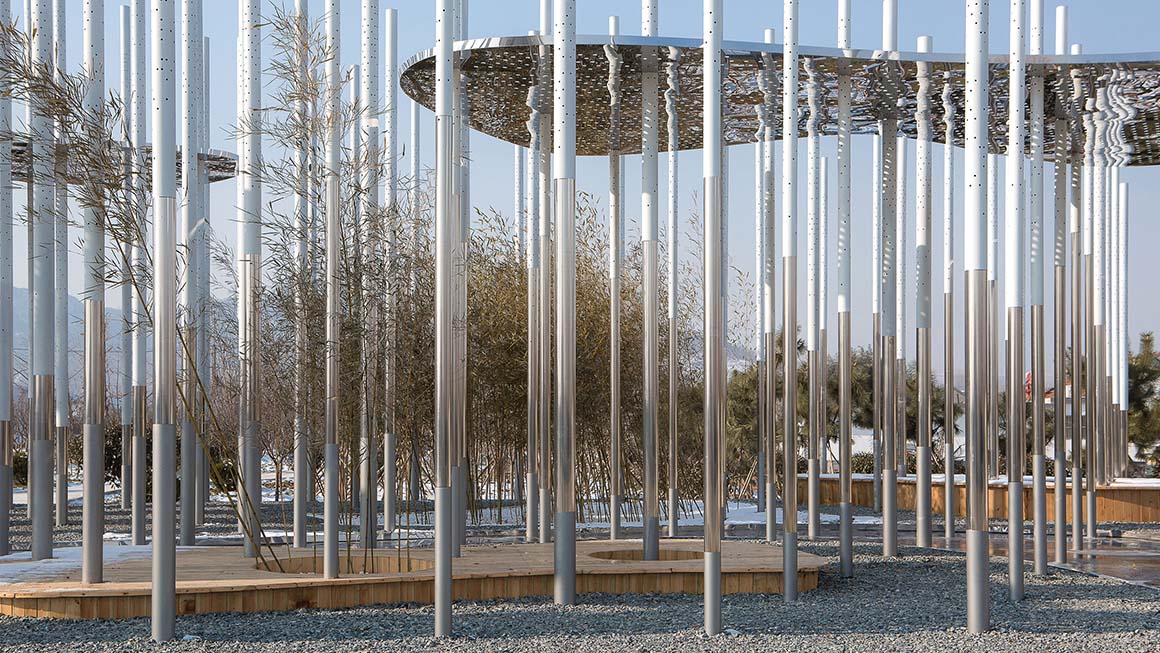
Primarily, this installation is a roadside landmark to draw attention to the entrance of the Dragon Mountain natural site (Zhulong Shan, China), a typical example of ‘Shanshui’, a traditional Chinese landscape composed of mountains, forest, clouds and water.
There are three different sequences of approach and just as many levels of perception in this installation.
When approaching the site from the street, a vibrant mountain composed of 200 inox poles subtly appears in the distance.
When passed at speed, the poles become a single surface, and the effects created by the different constituent materials reveal the shape of a new mountain.
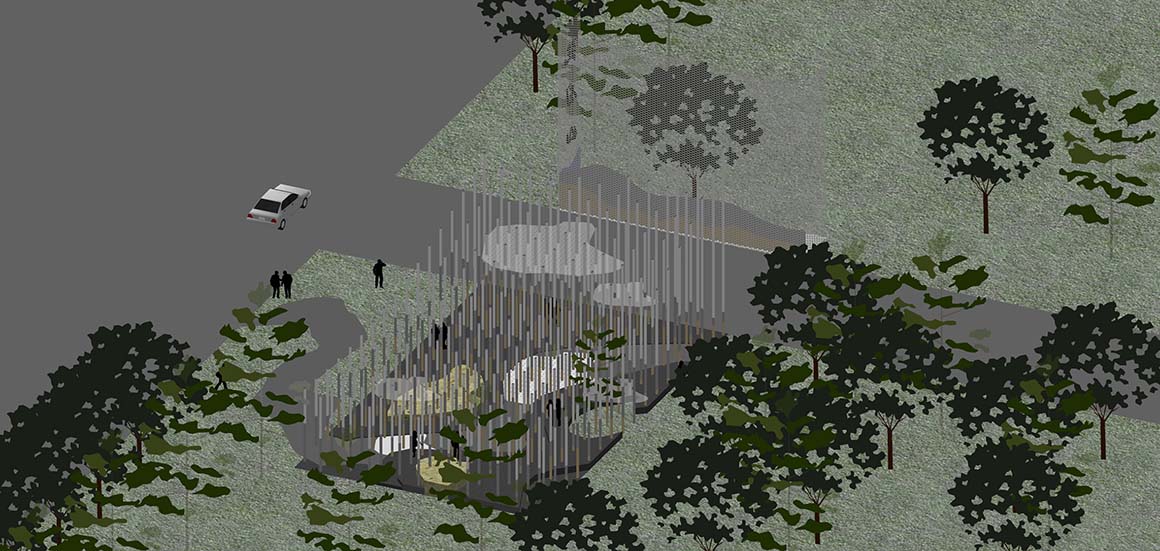

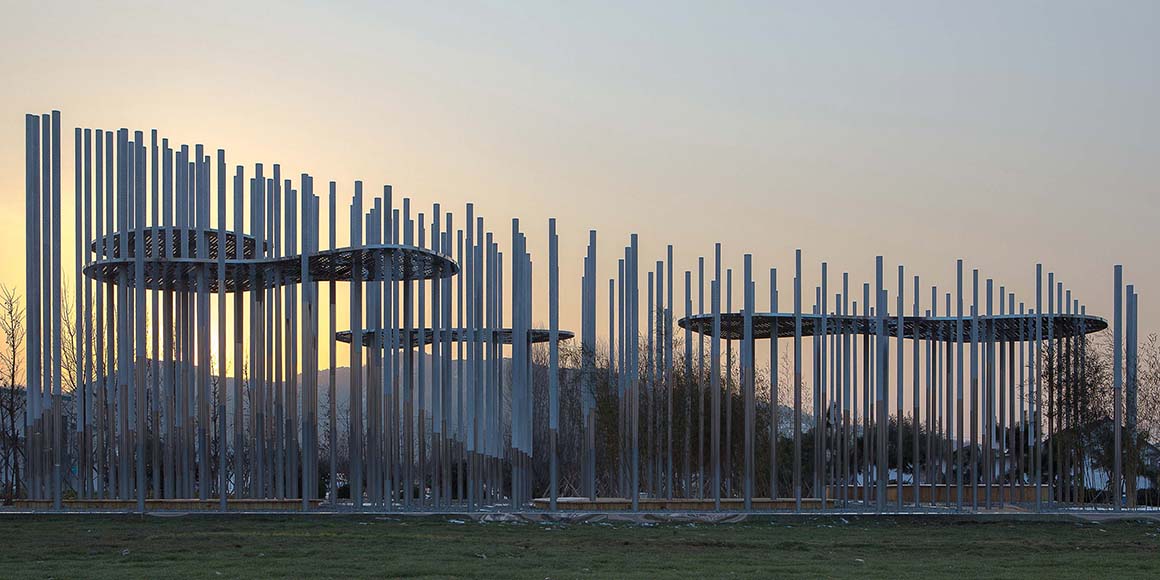
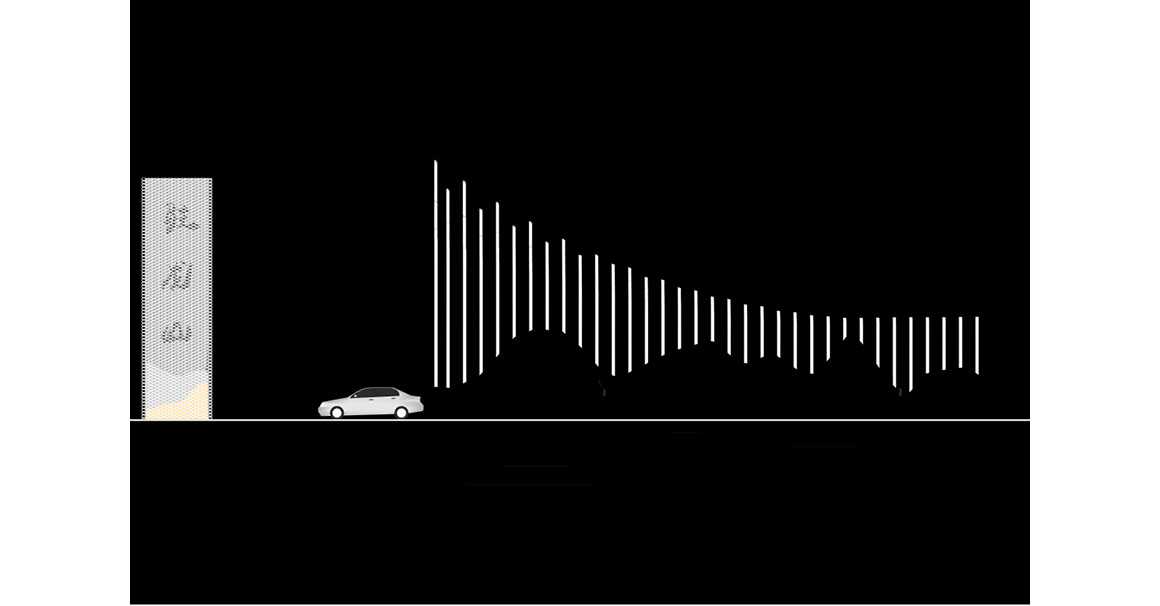
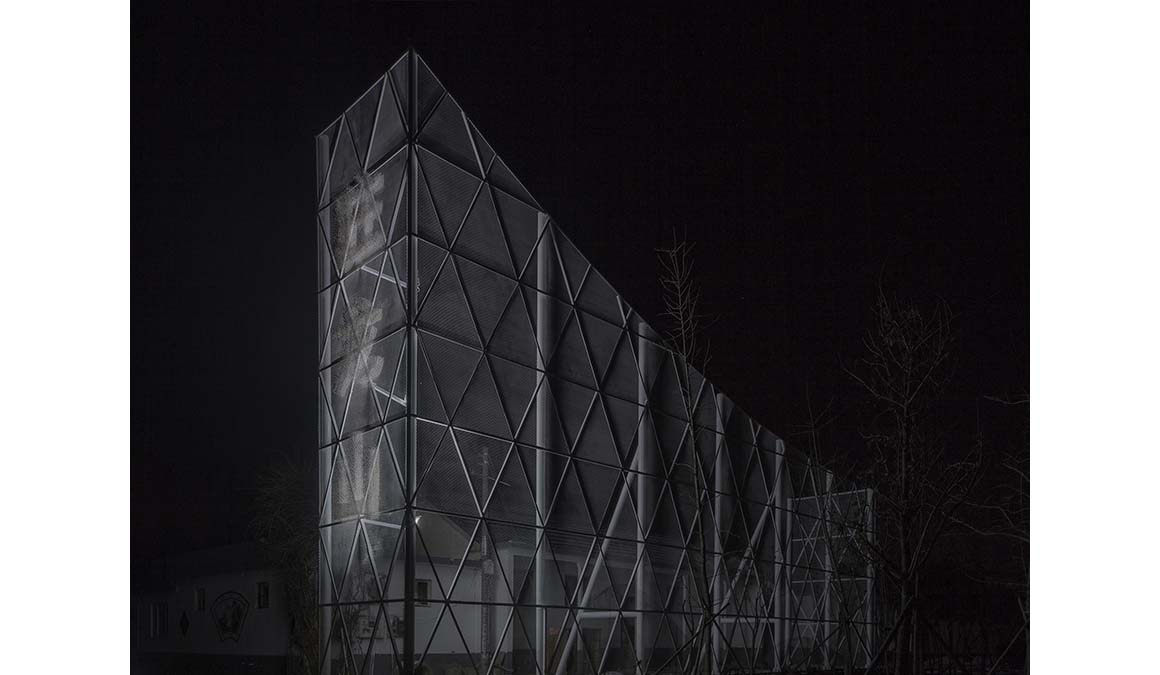

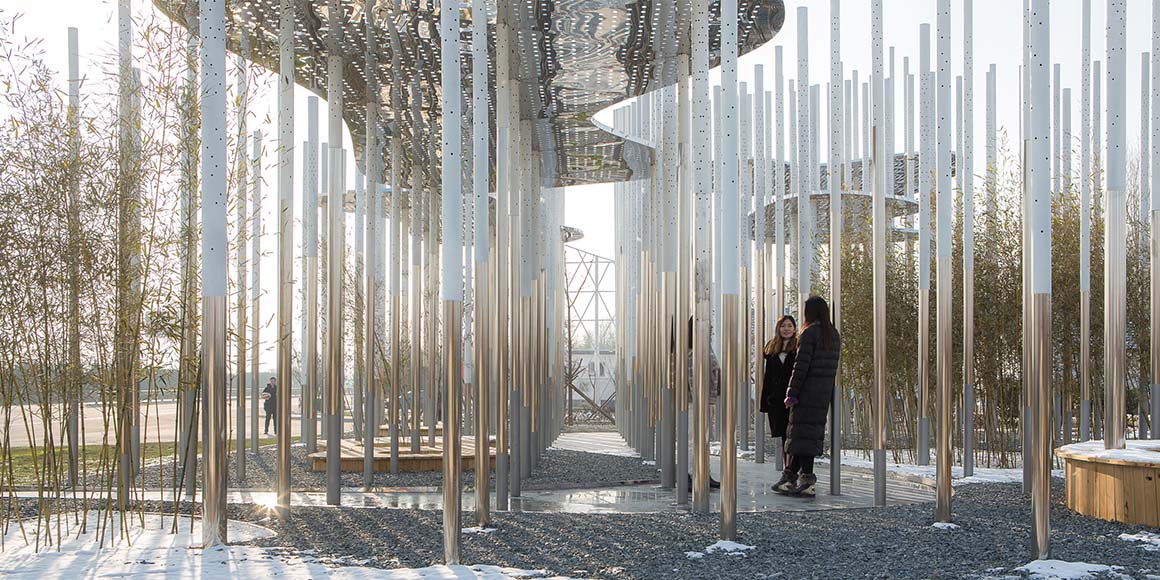
As the visitor moves closer, they discover a miniature landscape, in which they can move and stroll. The poles become a forest; a black marble river invites the visitor to walk towards the real mountain standing out against the horizon. The canopies placed above the visitors’ heads, to represent clouds, turn out to be mirrors. In this peaceful setting, urban life goes, on reflecting itself in the mirrored canopies and on the surface of the poles.
The perforations on the mirror panels create an interplay of light and shadow marking the passing of time.
At night, thousands of stars appear on the poles, through random perforations, giving shape to a mountain vibrant with light.
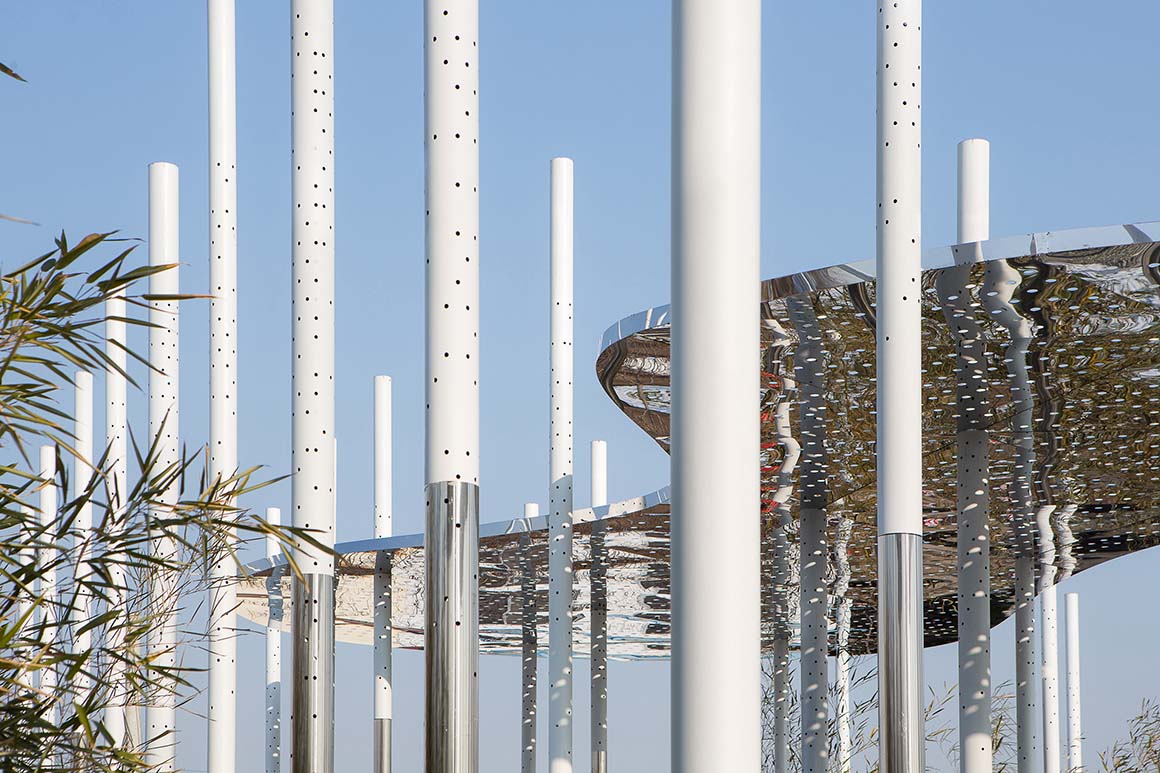
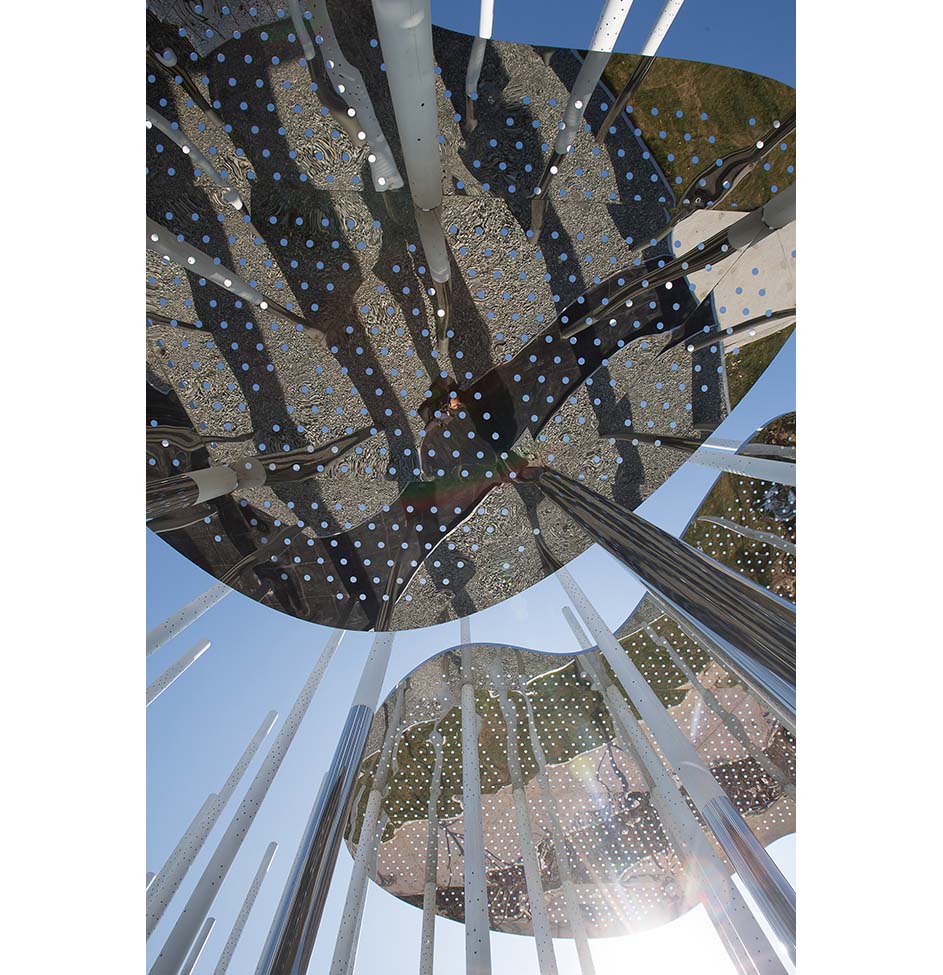
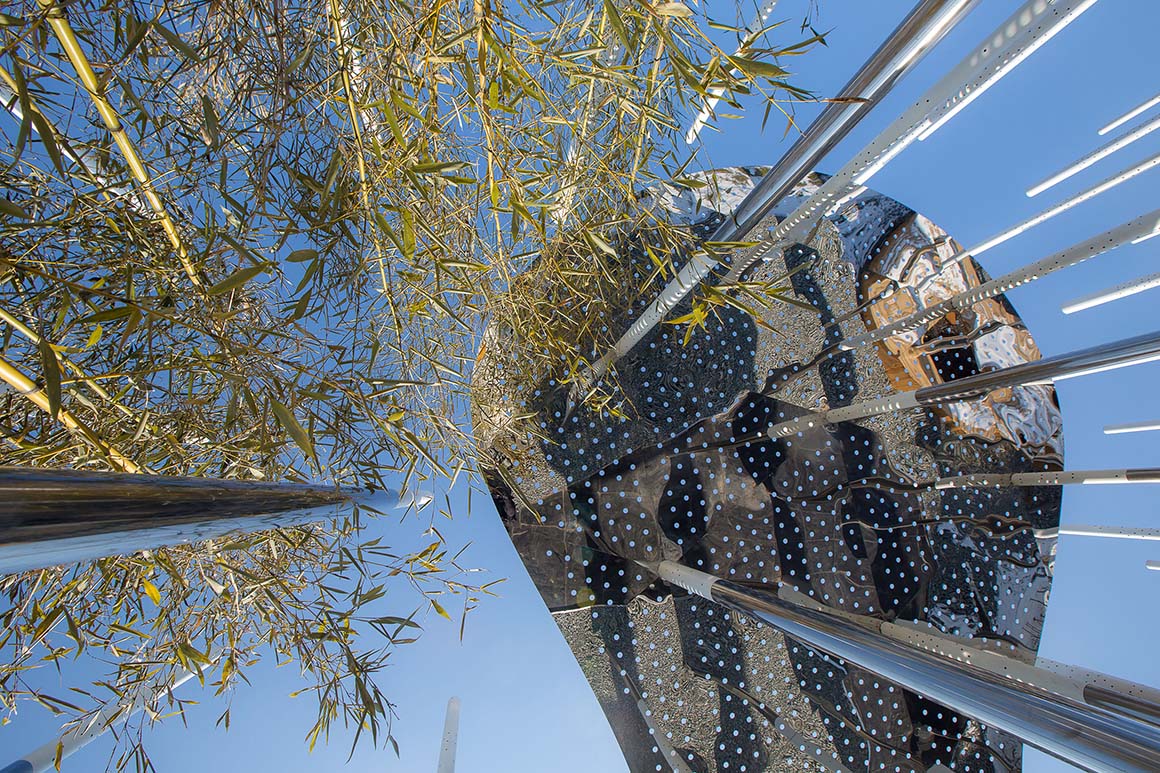
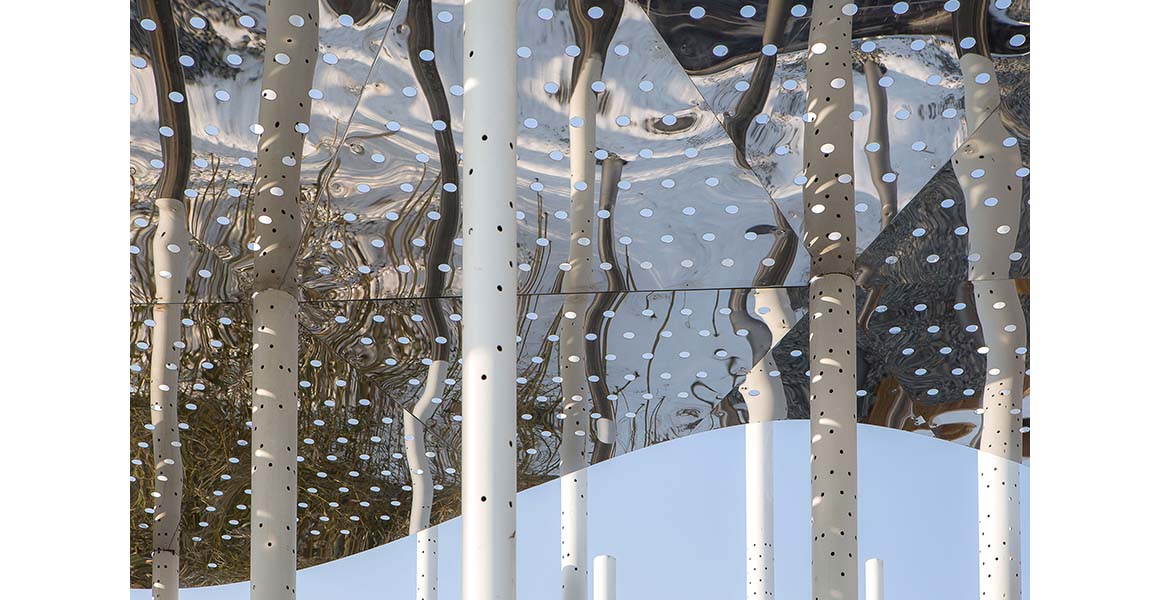
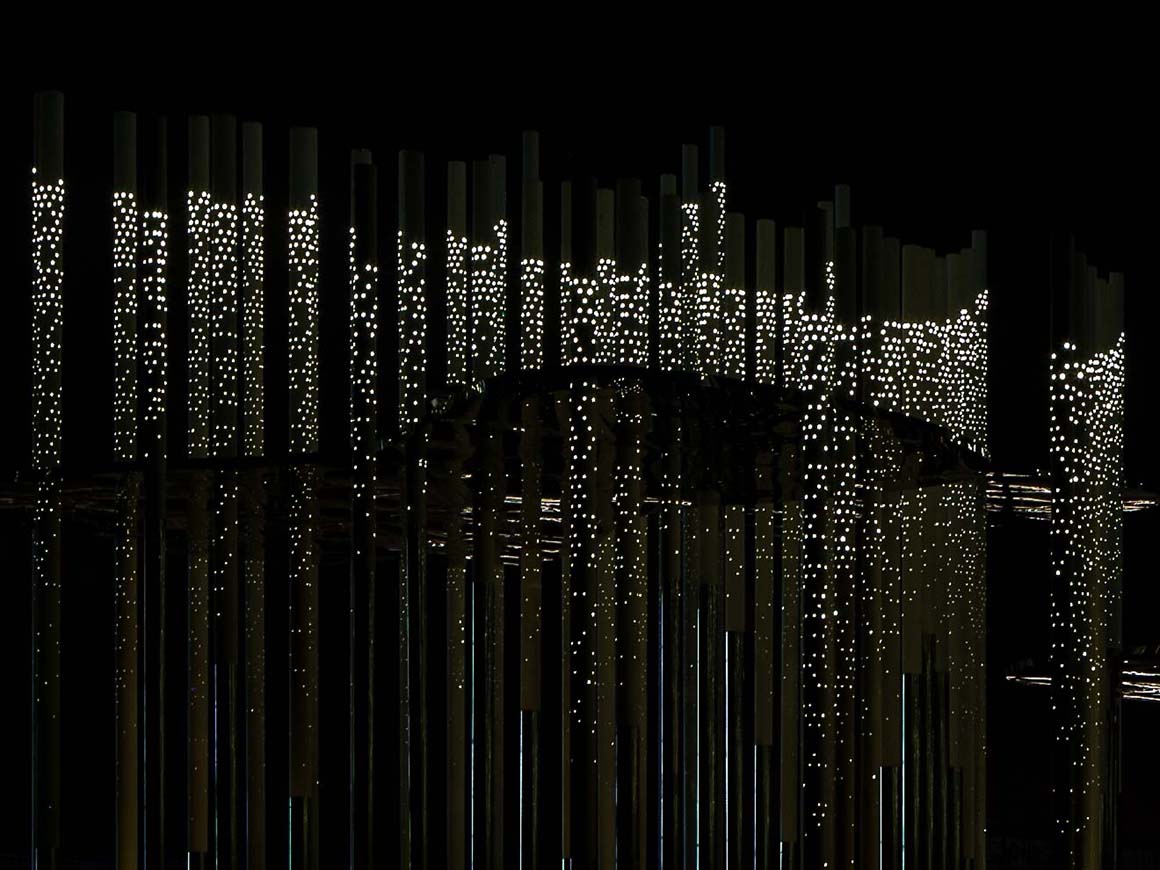
Project: Dragon Mountain Pavilion / Location: Rizhao Zhulong Shan, Shandong, China / Architect and project lead: Aurelien Chen / Planning: Urban and rural planning and design institute of CSCEC / Design support: Zhijian Workshop, Zhou Zhipeng(parametric design) / Client: Rizhao FaDa JiTuan / Built area : 350m² / Completion: 2018.8~2019.5 / Photograph: ©Aurelien Chen (courtesy of the architect)

